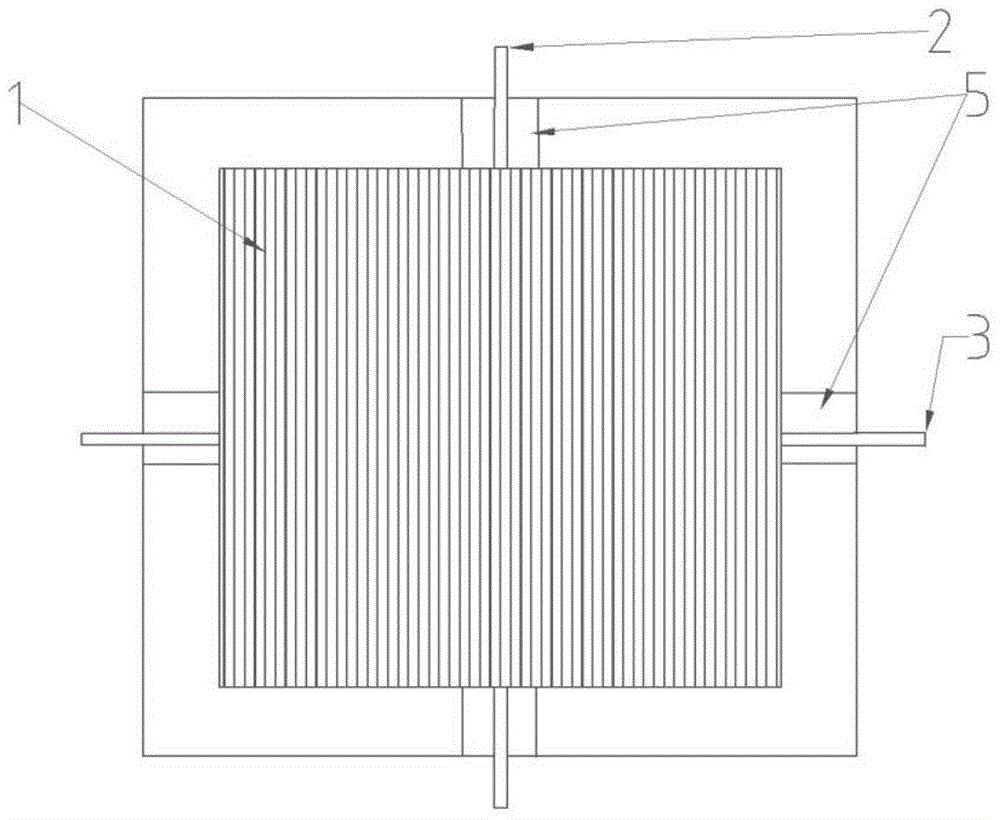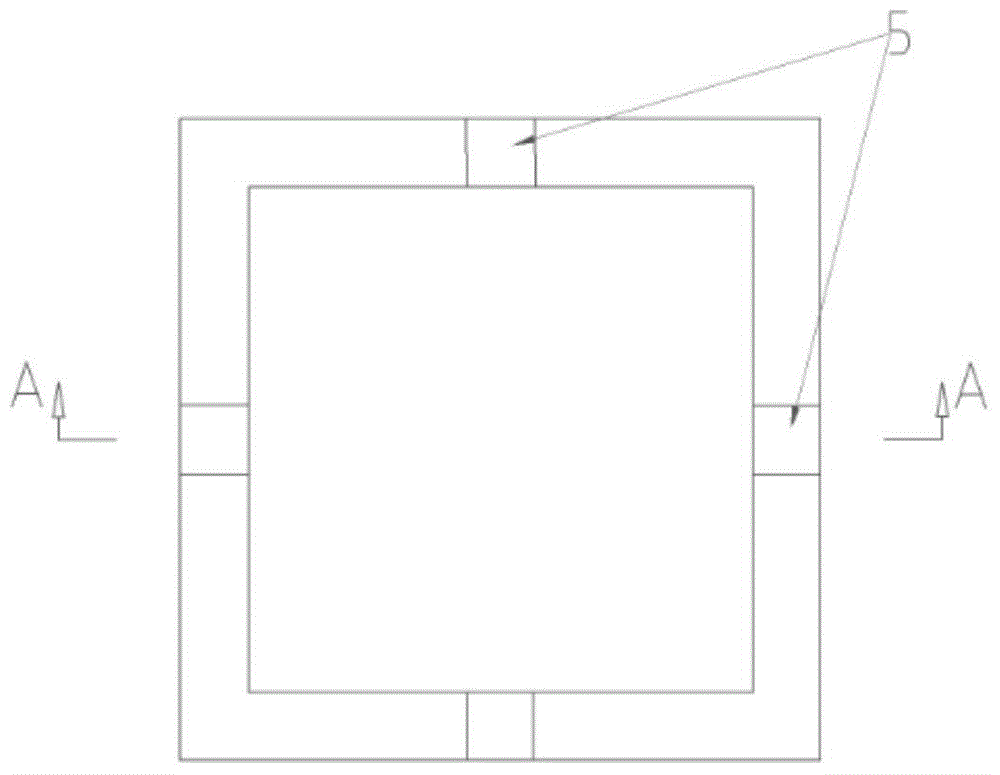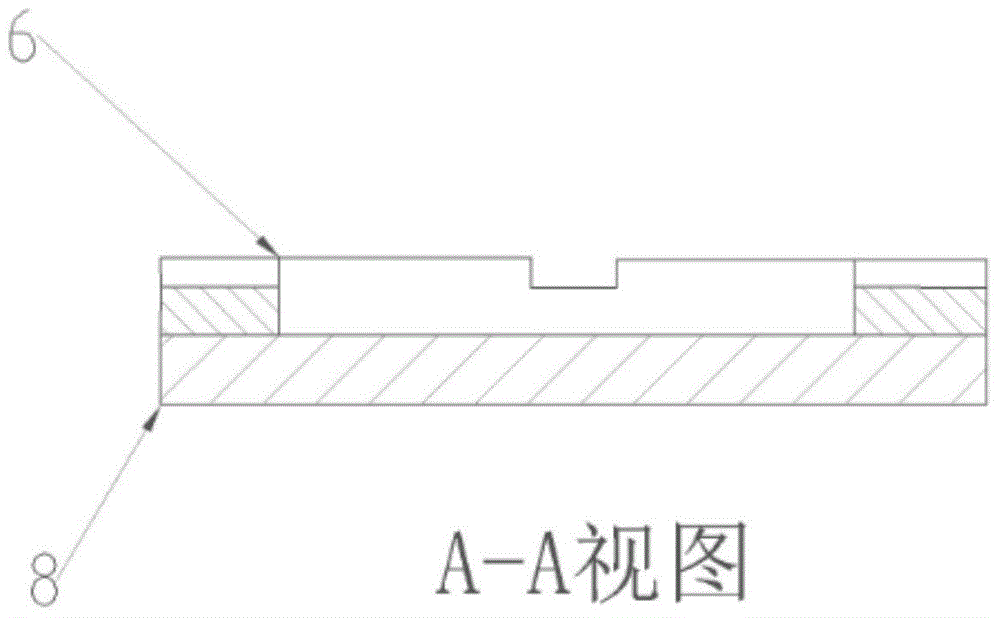Testing method for anisotropic thermal-expansion coefficient of continuous-fiber-reinforced resin-based composite material
A technology for strengthening resin base and thermal expansion coefficient, applied in the direction of material thermal expansion coefficient, etc., can solve the problems of fragile and easily broken thermal expansion coefficient, and achieve the effect of being conducive to demoulding, avoiding direct contact, and avoiding the introduction of test system errors.
- Summary
- Abstract
- Description
- Claims
- Application Information
AI Technical Summary
Problems solved by technology
Method used
Image
Examples
Embodiment 1
[0037] A test method for the anisotropic thermal expansion coefficient of continuous fiber reinforced resin matrix composites:
[0038] (1) Preparation of composite material samples: Lay resin-based composite material prepregs in the mold cavity, and lay fiber Bragg grating strings on multiple prepreg layers; that is, on the nth layer (n>5) A plurality of fiber Bragg grating strings 2 are laid in the fiber direction (0° direction), and a plurality of fiber Bragg grating strings 3 are laid in the n+i layer (i>5) perpendicular to the fiber direction (90° direction); different from the 0° direction What is more important is that on the FBG sensor laid in the 90° direction, a small piece of resin-based composite material prepreg 4 needs to be used to embed the grating area up and down, and the fiber direction in this small piece of resin-based composite material prepreg is the same as that of the fiber Bragg grating string. In order to protect the grating area without affecting th...
Embodiment 2
[0050] A test method for the anisotropic thermal expansion coefficient of continuous fiber reinforced resin matrix composites:
[0051] (1) Preparation of composite material samples: Lay resin-based composite material prepregs in the mold cavity, and lay fiber Bragg grating strings on multiple prepreg layers; that is, on the nth layer (n>5) A plurality of fiber Bragg grating strings 2 are laid in the fiber direction (0° direction), and a plurality of fiber Bragg grating strings 3 are laid in the n+i layer (i>5) perpendicular to the fiber direction (90° direction); different from the 0° direction What is more important is that on the FBG sensor laid in the 90° direction, a small piece of resin-based composite material prepreg 4 needs to be used to embed the grating area up and down, and the fiber direction in this small piece of resin-based composite material prepreg is the same as that of the fiber Bragg grating string. In order to protect the grating area without affecting th...
PUM
| Property | Measurement | Unit |
|---|---|---|
| Length | aaaaa | aaaaa |
| Width | aaaaa | aaaaa |
| Thickness | aaaaa | aaaaa |
Abstract
Description
Claims
Application Information
 Login to View More
Login to View More - R&D
- Intellectual Property
- Life Sciences
- Materials
- Tech Scout
- Unparalleled Data Quality
- Higher Quality Content
- 60% Fewer Hallucinations
Browse by: Latest US Patents, China's latest patents, Technical Efficacy Thesaurus, Application Domain, Technology Topic, Popular Technical Reports.
© 2025 PatSnap. All rights reserved.Legal|Privacy policy|Modern Slavery Act Transparency Statement|Sitemap|About US| Contact US: help@patsnap.com



